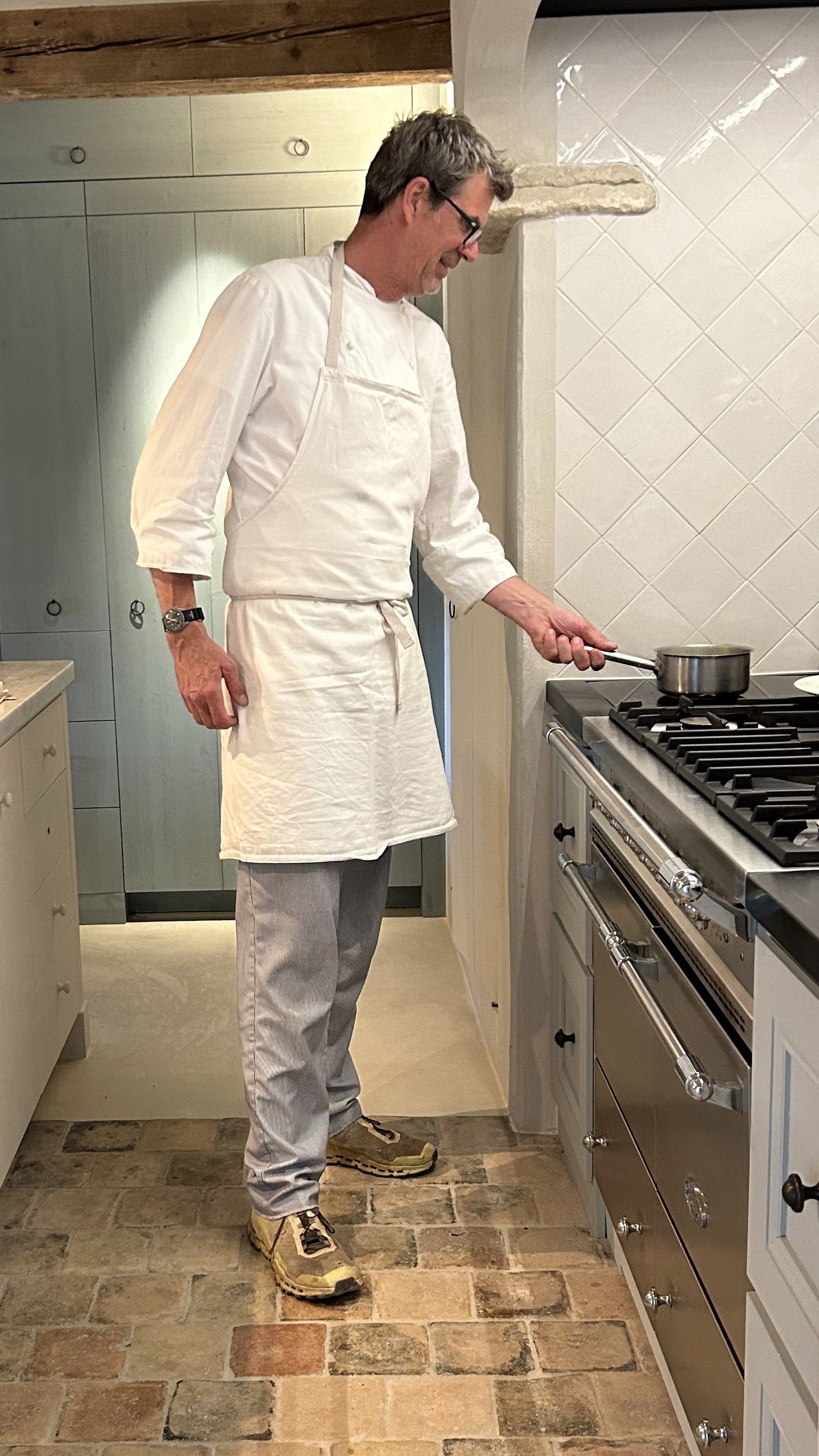GÉRALD KONINGS’ GLUTEN-FREE COOKIES
During a vacation to Provence in April 2024, I enjoyed several meals at a private residence from the hand of Gérald Konings, a Swiss-Dutch who lives & works in Provence. These cookies ended one meal. They are delicious: chewy, chocolate-y, and gluten-free. Make ahead some of Konings' gluten-free flour mix (ingredients and measurements below) to use in this recipe and for more GF baking or breading of your own devising.
Gérald Konings’ Gluten-Free Cookies, chock full of chocolate, dried cranberries and rolled oats.
RECIPE: Gérald Konings’ Gluten-Free Cookies
Make about 32.
Ingredients
350 grams Konings’ gluten-free flour mix (recipe below)
Pinch of salt
1 teaspoon baking powder
250 grams butter, softened
450 grams brown sugar
1 large or 2 medium eggs
220 grams rolled oats
150 grams dark chocolate chips
150 grams dried cranberries
Directions
In a large bowl, add the flour mix and sift in the salt and baking powder. Set aside. In a sturdy stand mixer (the dough comes out stiff) or with a large bowl and wooden implements, cream the butter and sugar. Add the egg(s) and incorporate; mix in the rolled oats.
Sift in the flour mixture in stages, mixing it in well but not overly mixing. Toward the end, add in the chocolate chips and dried cranberries, incorporating them evenly throughout. (You may find “kneading” them in with your hands to be better and easier than using a spoon.)
Using a small ice cream scoop, make balls of the cookie dough and place, about 2 inches apart, on a baking sheet lined with parchment paper. Bake in a preheated 350-degree convection oven (or a 360-degree non-convection oven) and bake for 10-12 minutes until the cookies are getting crusty on the outside but remain very soft on the inside.
Cool for 5 minutes on their baking sheets, then separately on cooling racks until ready to serve or store.
Konings’ Gluten-free Flour Mix
Makes 570 grams; stores well for weeks.
Ingredients
255 grams rice flour
100 grams glutinous (“sweet”) rice flour
150 grams tapioca flour
52.5 grams arrowroot powder
12.5 grams xanthan gum powder
Directions
Mix all ingredients together gently but well so that there is an even distribution of the ingredients.
Wine Pairings and Why: Odd as it seems, sweet foods are the most difficult to pair with wine. Sweetness, as one or more sugars such as fructose or sucrose, combines with the majority of wines (themselves dry) to cause sensations on the tongue of bitterness, astringency and acidity. Drink a dry white Burgundy with vanilla ice cream and discover a terrible experience. But if you pair the level of sugar in the food with a corresponding (or slightly higher) level of sweetness in the wine, that works. A good example is pairing an apple tart with a medium-sweet muscat. But the overall guideline is that sweetness in food requires the same level of sweetness in wine. With some moderately sweet desserts, that wine would be a Moscato from Italy or this country or a Piedmontese Brachetto d’Acqui. With very sweet desserts, a Port, or a Bordeaux Sauternes, or even a Bual or Malmsey Madeira from Portugal.

